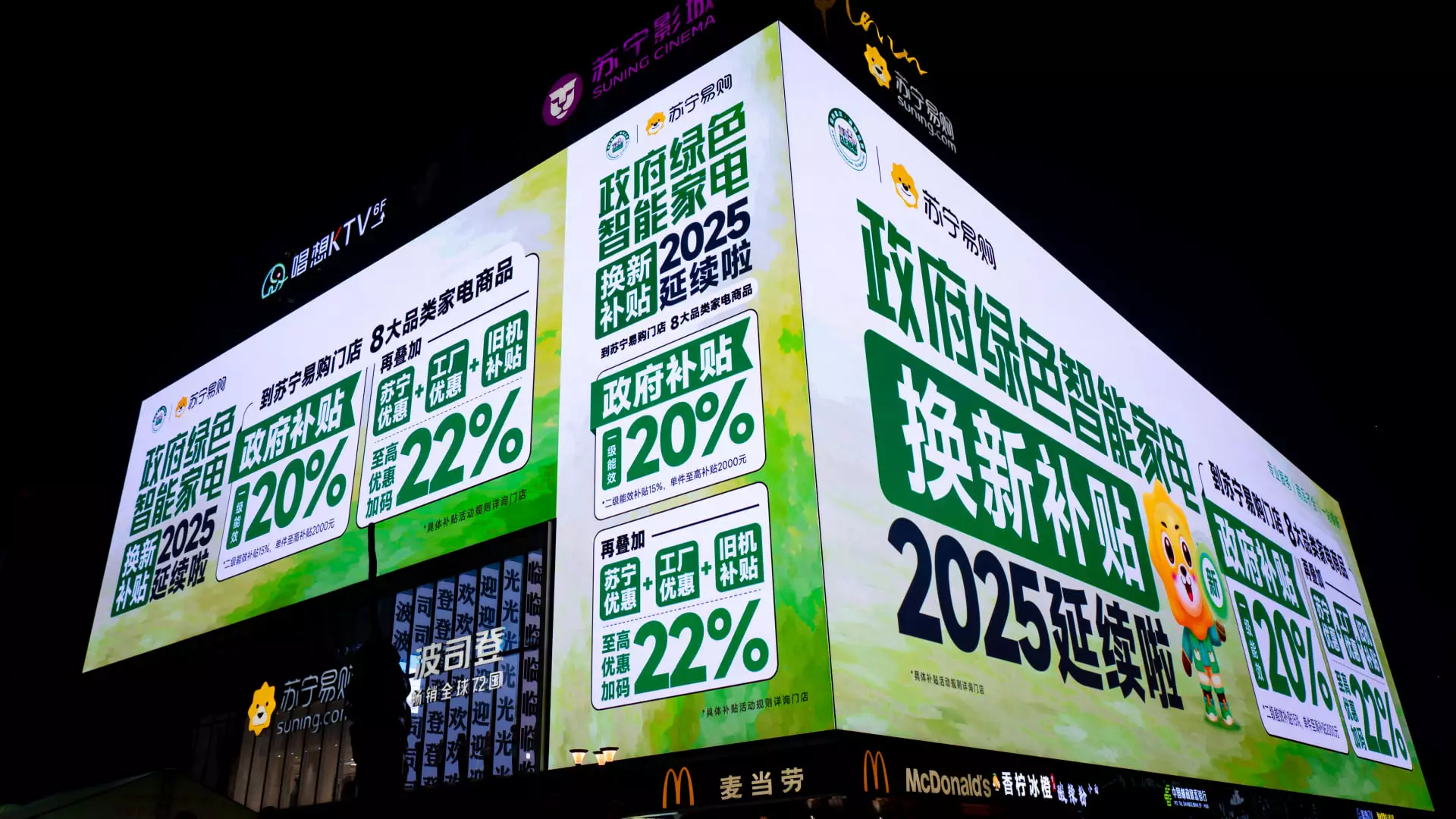With the dawn of 2025, China has embarked on an ambitious consumer stimulus initiative aimed at revitalizing its economy amidst ongoing uncertainties. This new program, which focuses on subsidies for home appliances rather than direct cash rebates, signifies a shift in strategy intended to bolster consumer spending and support leading manufacturers. Analysts are optimistic about the potential impact on specific stocks, particularly in the home appliance sector. However, underlying risks remain that could hinder this optimistic outlook.
China’s approach to consumer stimulus has evolved. Rather than providing cash directly to citizens, the government has implemented a trade-in program for home appliances, which allows consumers to receive subsidies of up to 20% on various household products. This program has been expanded recently to include microwaves, water purifiers, dishwashers, and rice cookers, broadening the scope of available discounts. This initiative appears designed to stimulate demand in a sector that has shown signs of stagnation since the pandemic’s onset.
Market analysts, such as Morningstar’s Jeff Zhang, view this as primarily beneficial for established players like Midea, Gree, and Haier. These companies dominate the air conditioner market, making them well-positioned to take advantage of increased sales from government-backed incentives. Zhang estimates a revenue increase of 2%-5% for these firms over the next several years, reflecting a potentially lucrative opportunity for investors.
The stock market has already reacted positively to the announcement of the stimulus measures. Midea’s shares surged nearly 38% in the previous year, with expectations for an additional 26% upside based on Morningstar’s projections. Similarly, Haier and Gree’s stock performances have been robust, suggesting strong market confidence in their future growth driven by the stimulus initiative.
It’s particularly notable that both Morningstar and Citigroup analysts have maintained their “buy” ratings on these stocks. Citigroup’s targets are even more bullish, indicating an optimistic view of the home appliance segment’s potential. However, the backdrop of price wars and a sluggish real estate market introduces some cautionary angles worth addressing.
Despite the favorable conditions created by the stimulus strategy, consumer sentiment in China remains tepid. A recent 3.3% decline in home appliance prices year-on-year signals a lack of aggressive consumer spending, reflecting broader anxieties regarding future income stability. While the government’s move could incentivize purchases of new appliances, lingering concerns about economic health may temper consumer enthusiasm.
The forthcoming retail sales and GDP figures are anticipated with keen interest, as they will provide deeper insights into the effectiveness of the stimulus policies and the actual state of consumer health in China. Analysts are particularly looking forward to data that illustrates the impact of the previous year’s subsidies and the essential economic indicators for growth in 2025.
China’s e-commerce platforms stand to gain significantly from the expansion of the consumer stimulus program. JD.com, specifically, has emerged as a front-runner in capitalizing on the trade-in initiatives, attributed to its robust supply chain and experience with similar programs in the past. This positions JD.com as a prime beneficiary of increased consumer demand for electronics and home appliances.
Conversely, Alibaba also retains strong relevance in this context, particularly with its Tmall platform’s solid foothold among major brands. Analysts predict that as the government’s policies unfold, both JD.com and Alibaba will experience positive reverberations through enhanced sales volume.
However, it’s essential to note that companies like Pinduoduo may not reap the same levels of benefit. The competitive landscape is intensifying as the e-commerce space matures, with increasing overlap in product offerings blurring the lines between market players.
China’s expanded consumer stimulus program for 2025 presents an intriguing interplay of prospects and challenges within the economy. While leading home appliance manufacturers stand to benefit significantly from increased consumer spending fueled by government support, broader economic anxieties and potential market pitfalls merit a cautious approach among investors. As e-commerce platforms adapt to leverage these new policies, stakeholders must remain vigilant, balancing expectations of growth with the persistent risks posed by an unpredictable economic environment. The forthcoming economic reports will undoubtedly shape the landscape as China navigates this critical phase of recovery.

